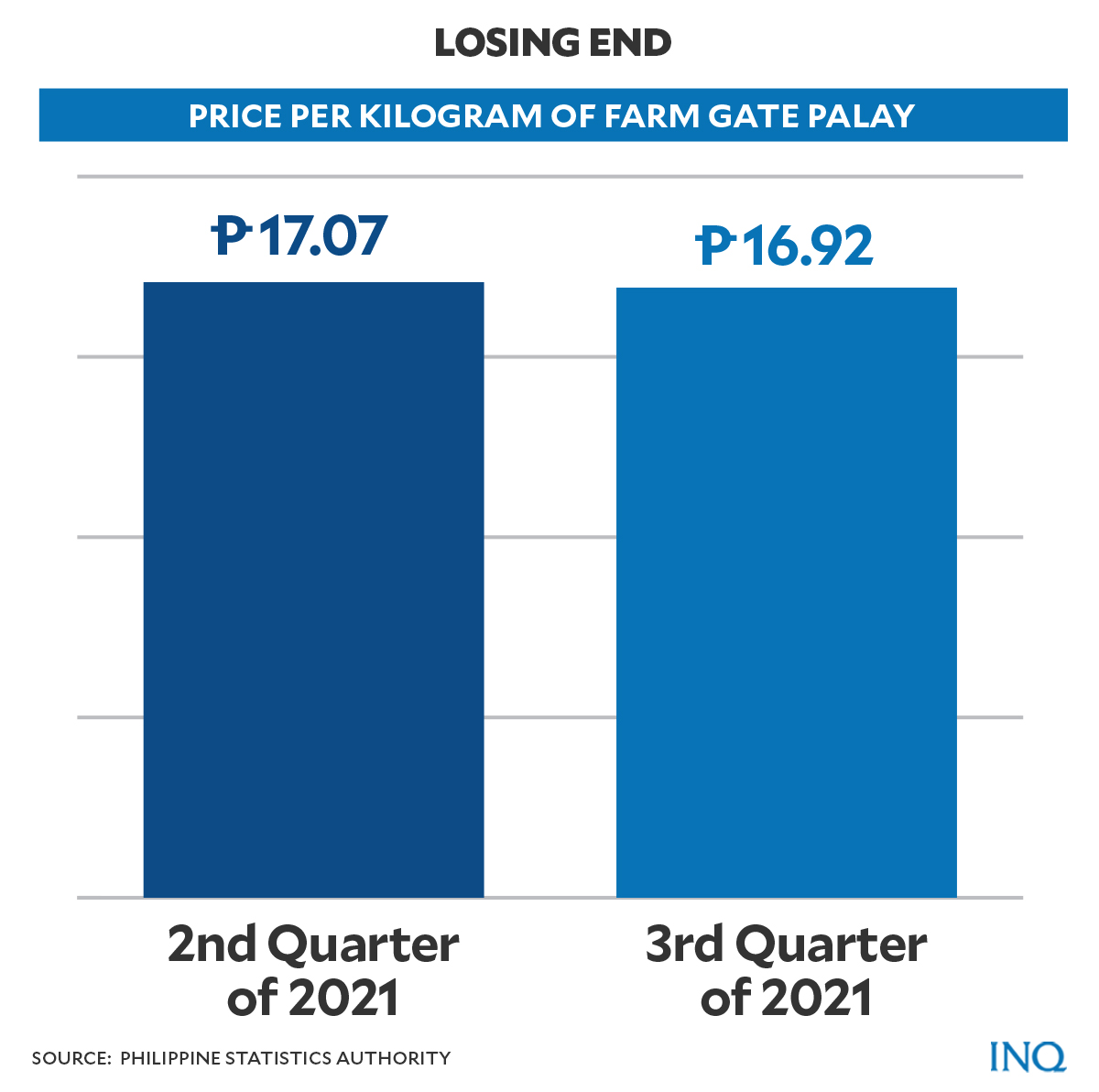Imports impoverish PH farmers but don’t ease rice prices
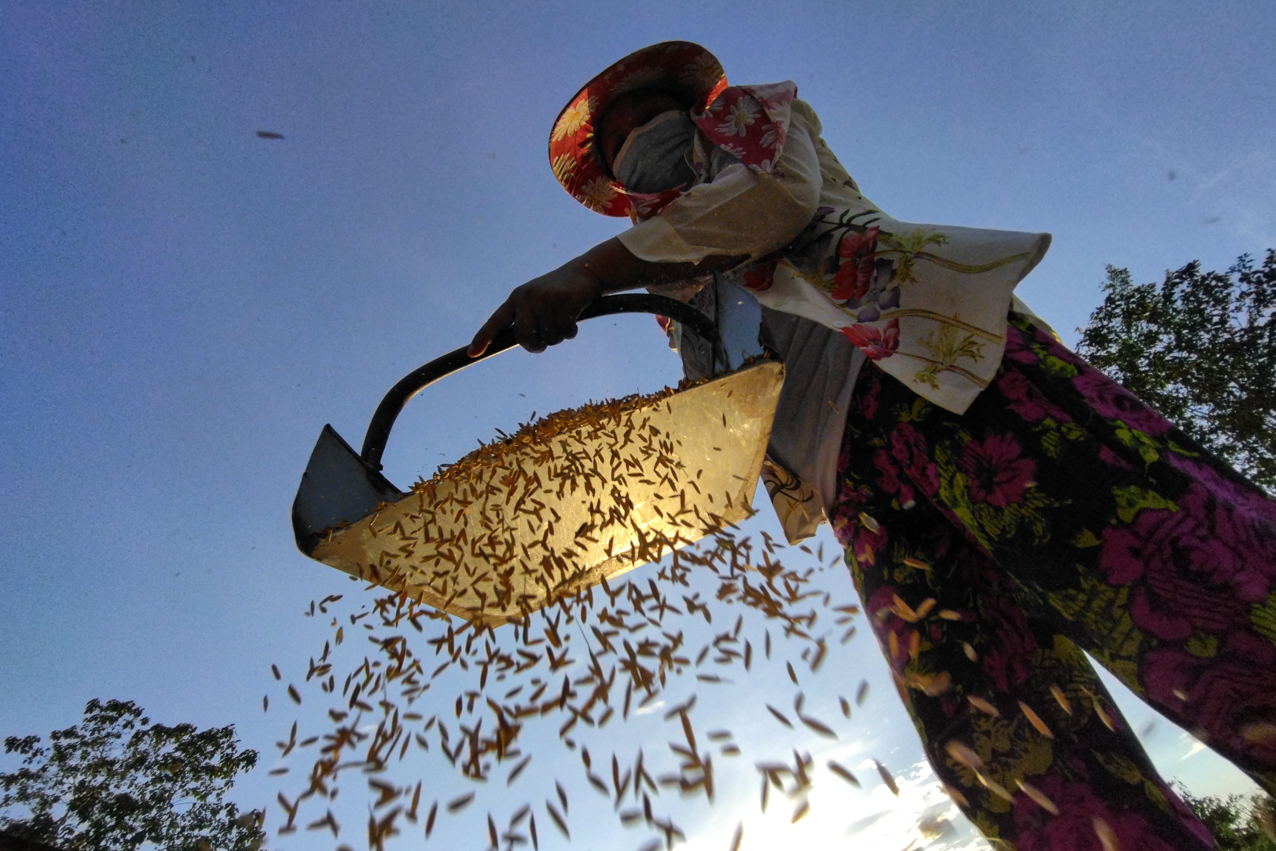
PRECIOUS GRAINS Farmer Irene Soriben uses a “saki” (rice shovel) to collect sundried palay (unhusked rice) at a rice drying facility in the village of Kita-Kita in Balungao, Pangasinan. The government says food producers, like rice and vegetable farmers, and workers in the agriculture industry, will be key in the country’s economic recovery after the pandemic. —RICHARD BALONGLONG / FILE PHOTO
MANILA, Philippines—As the Philippines celebrates National Rice Awareness Month this November, the face of rice being consumed by Filipinos is likely to be that of a Vietnamese or a Thai farmer.
Importation is digging a deeper pit for Philippine farmers in the belief that allowing rice grown in other countries to enter Philippine markets with virtually no limit would keep prices stable for consumers.
November is supposed to be National Rice Awareness Month, according to Proclamation No. 524 issued by then-President Gloria Macapagal Arroyo on Jan. 5, 2004.
The celebration coincided with the anniversary of the Philippine Rice Research Institute (PRRI), created by Executive Order 1061 on Nov. 5, 1985.
But raising awareness on rice and its production would inevitably lead to an ugly picture—how Filipino rice farmers continue to suffer not only during the COVID pandemic but also because of other factors that have been bludgeoning the agriculture sector.
Article continues after this advertisementPalay production rising
According to data released by the Philippine Statistics Authority (PSA) on Nov. 8, there was a 6.7 percent increase in palay production for the third quarter of 2021.
Article continues after this advertisementThis was more than the 1.2 percent increase seen in the second quarter of this year. Meanwhile, there was an 8.6 percent increase during the first quarter of 2021.
From January to September this year, palay production saw a 5.5 percent increase, four percent more than the 5.1 percent increase during the same period in 2020.

Graphic by Ed Lustan

Graphic by Ed Lustan
Farmers harvested a total of 12.6 million metric tons (MT) of palay from January to September this year. In comparison, there were 11.9 million MT of palay harvested during the same period in 2020, while there was 11.3 million MT of palay harvested in 2019.
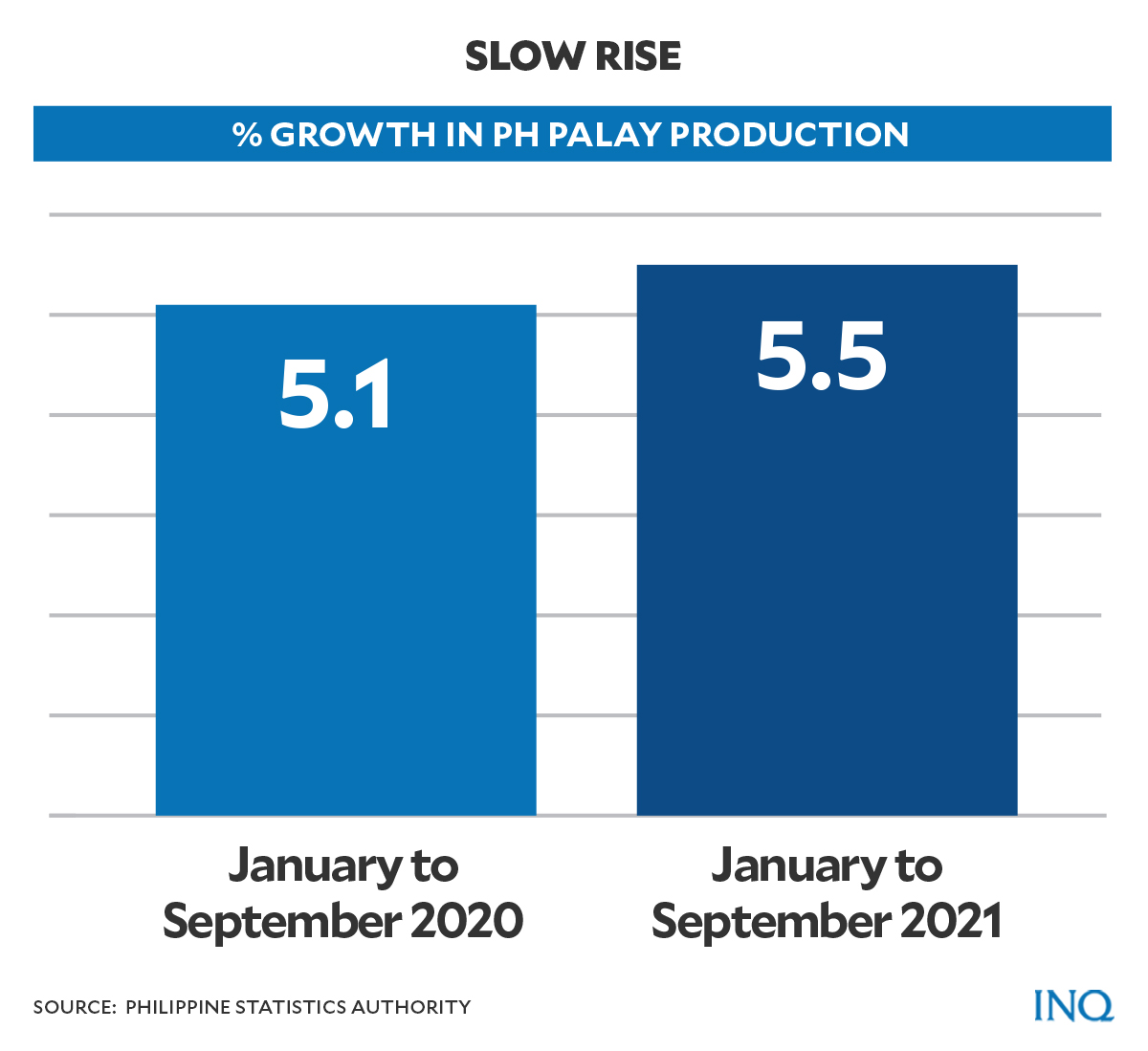
Graphic by Ed Lustan
Plummeting palay prices
At current prices, the value of palay produced during the third quarter of 2021 was around P82 million.
The average farm gate price of dry palay, on the other hand, declined from P17.07 a kilo in the second quarter to P16.92 a kilo in the third quarter this year.
From January to September this year, the average farm gate price of dry palay was P16.91 per kilo—lower than the average farm gate prices at P17.27 a kilo during the same period in 2020 and P17.82 a kilo in 2019.
Results of a survey released in September by Federation of Free Farmers (FFF) showed that in provinces like Pangasinan, Tarlac, Mindoro Occidental, Negros Occidental, Zamboanga Sibugay, Davao del Norte and South Cotabato, the production cost of palay ranged from P12 to P15 per kilo.
The production cost for palay was P14 to P15 per kilo in Sultan Kudarat province, according to the FFF survey results.
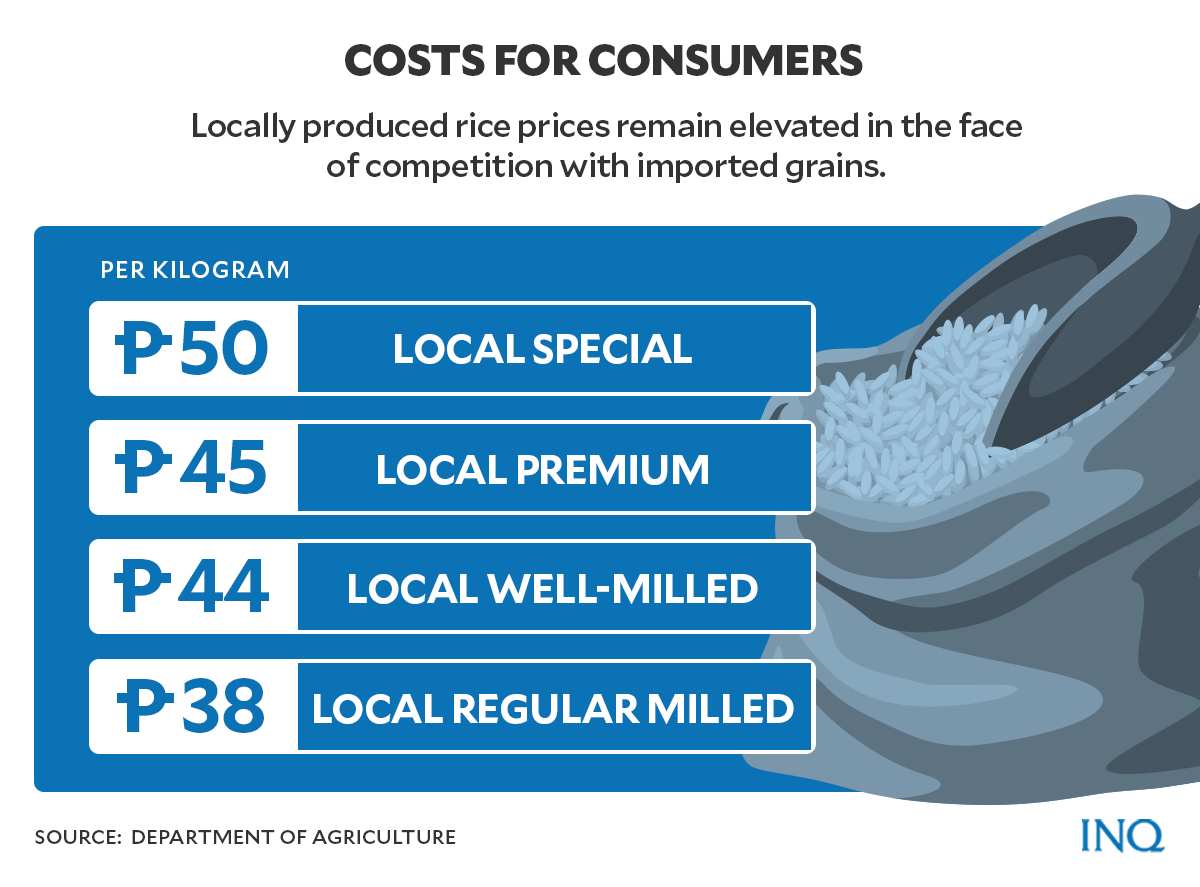
Graphic by Ed Lustan
Data from the Department of Agriculture (DA) showed that as of Nov. 5, the retail prices for locally-grown rice in the Philippines were:
- Local special: P50 per kilo
- Local premium: P45 per kilo
- Local well-milled: P44 per kilo
- Local regular milled: P38 per kilo
Rice importation
The low farm gate prices of palay were paired with the bulk importation of rice despite an increase in palay output in the country during the past few months.
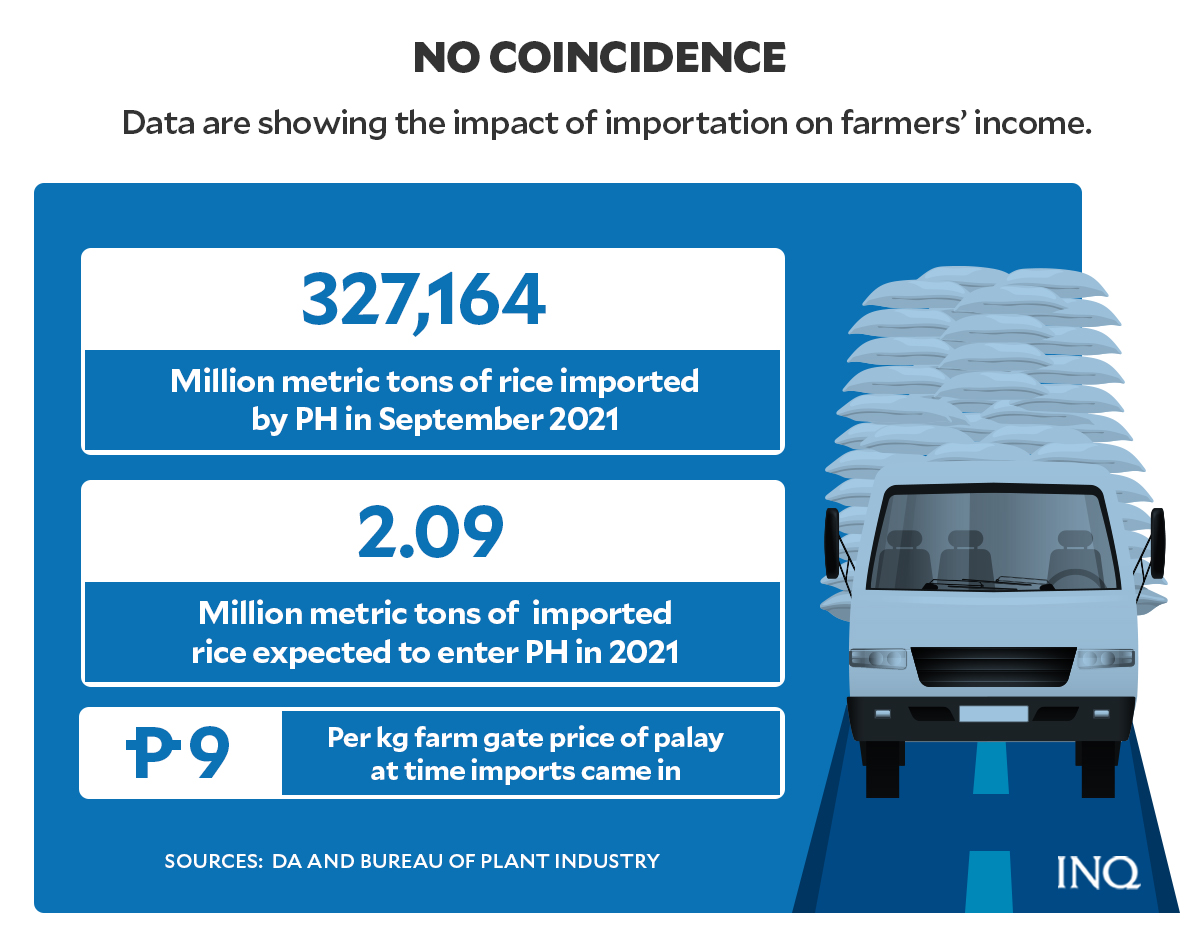
Graphic by Ed Lustan
In September, at least 327,164 MT of imported rice entered the country’s ports, based on data from the Bureau of Plant Industry (BPI). This was also when farm gate prices of palay were at a low of P9 per kilogram in some provinces.
From January to September, around 1.99 million MT of rice arrived in the country. This is 7,000 MT short of last year’s import volume ceiling of 2.06 million MT.
During the same period, at least 5,800 import clearances for 4.49 million MT of rice grown in Vietnam or Thailand were approved by the BPI.
According to the DA’s price watch, as of Nov, 4, the retail prices of imported rice were:
- Imported special: P50 per kilo
- Imported premium: P45 per kilo
- Imported well-milled: P42 per kilo
- Imported regular milled: P38 per kilo.
Imported rice is cheaper than locally produced rice which makes it a struggle for Filipino farmers to compete. Some farmers are left barely surviving with little to no income as production costs stood at around P12 per kilo.
The Department of Agriculture (DA) estimated that the country’s rice imports might reach 2.09 million MT this year.
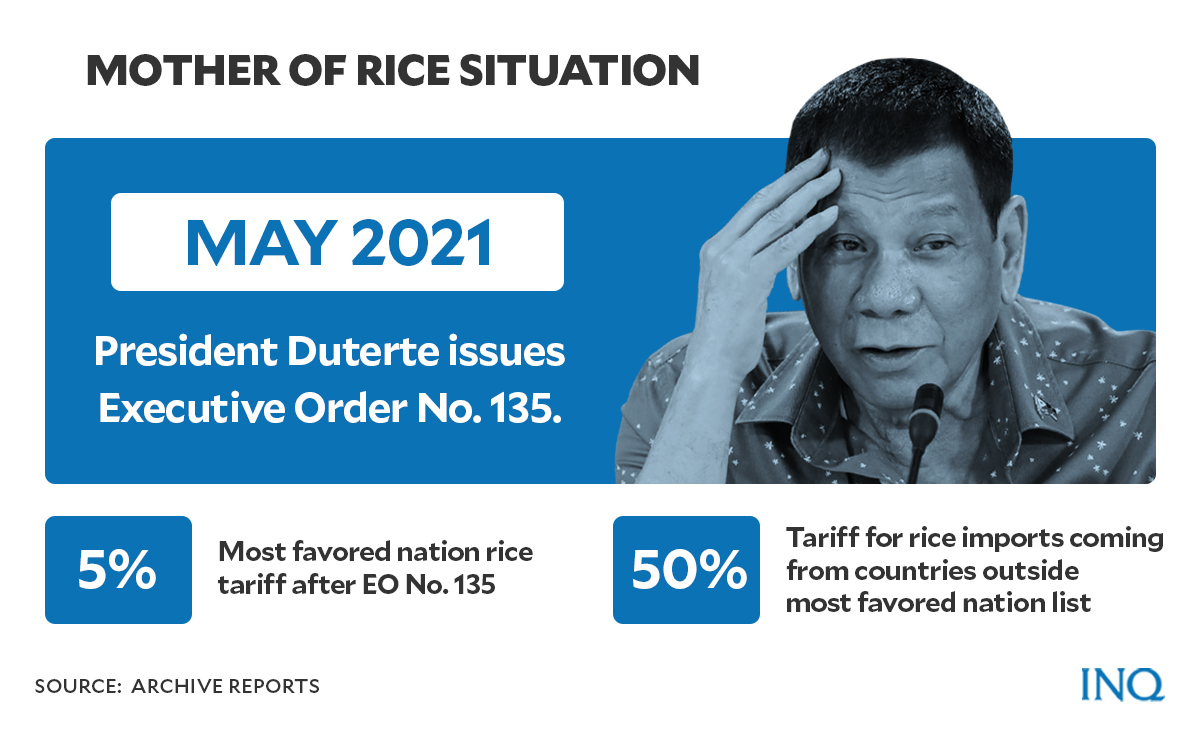
Graphic by Ed Lustan
President Rodrigo Duterte last May issued Executive Order No. 135, which temporarily reduces most favored nation (MFN) tariffs for rice to 35 percent from 40 percent for in-quota imports (those on the most favored list) and 50 percent for out-quota imports (those outside the most favored list).
READ: Congress urged to probe, stop lower tariff on rice imports
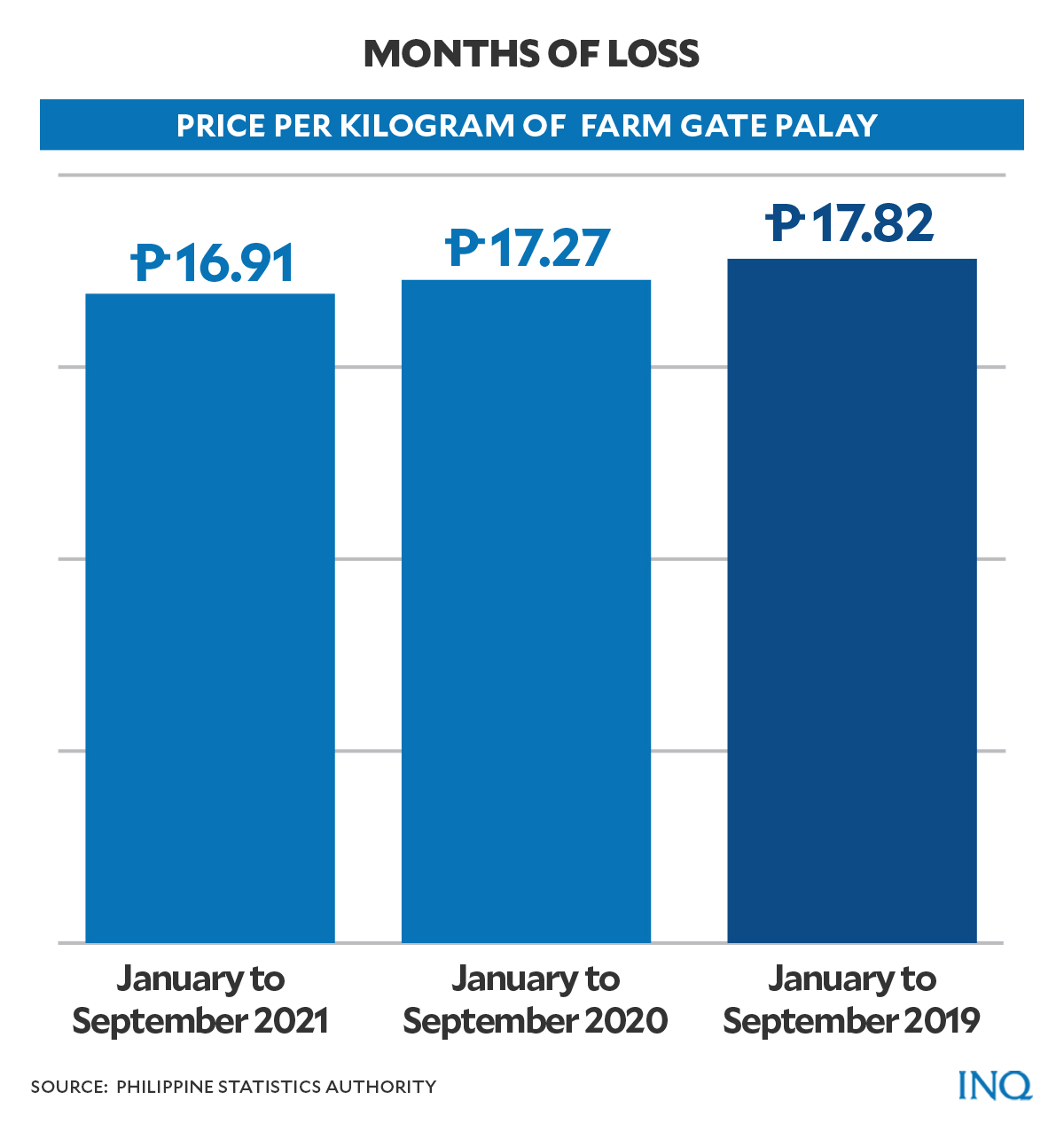
Graphic by Ed Lustan
As palay prices continue to drop and were expected to further dip this November, the Federation of Free Farmers (FFF) urged Congress last month to review the rice tariffication law (RTL).
READ: Review of rice tariff law sought as palay prices plummet
Congress has a “moral responsibility to promptly rectify any deficiency, or omission in the law before these bring more harm to our farmers,” said FFF national chair Raul Montemayor.
“They also need to address indications that the benefits of rice trade liberalization have been captured mostly by market intermediaries, while consumers have not benefited significantly from cheaper rice,” he added.
Smuggled rice
Last month, the FFF said the country lost another P3.1 billion over worsening cases of technical rice smuggling.
According to FFF’s analysis of data from the Bureau of Customs (BoC), from January to September this year, rice imports were undervalued by an average of P4,983 per ton.
It was four percent higher than the level of undervaluation in 2020, which resulted in a total revenue shortfall of P3.1 billion.
The group said the shortfall “is almost equal” to the forgone tariff for the whole of 2020.
Since the implementation of RTL in 2019, around P7.5 billion tariff collections were lost due to undervaluation.
“Undervaluation and misdeclaration of rice imports have actually worsened, despite assurances from BoC that they would adopt reforms in their classification and valuation procedures based on the FFF’s recommendations,” said Montemayor.
Undervaluation, FFF said, “does not only deprive the government of much-needed revenues, but also lessens the funds that are supposed to go to rice farmers.”
According to Food and Fertilizer Technology Center for the Asian and Pacific Region (FFTC-AP), around P98 billion worth of rice had been smuggled into the Philippines from 1986 to 2009.
READ: Agriculture smuggling: An unending torture for PH farmers
Lost jobs
The DA has recently called on local governments to help around 900,000 farm workers who have lost their jobs due to the series of typhoons that have devastated agricultural lands in the country.
According to the PSA, 862,000 farm workers were displaced in September, following the impact of Typhoon Jolina, which damaged over 30,000 hectares of agricultural land and destroyed P1.36 billion worth of agricultural infrastructure.
READ: DA calls on local gov’ts to help farmworkers
“The DA is now distributing cash assistance and free seeds to enable farmers to plant immediately and generate employment,” said Agriculture Undersecretary Fermin Adriano.
“But obviously, the task is too huge for DA to handle alone. The [local governments] should be mobilized as their primary mandate is to deliver basic services to their constituents.”
